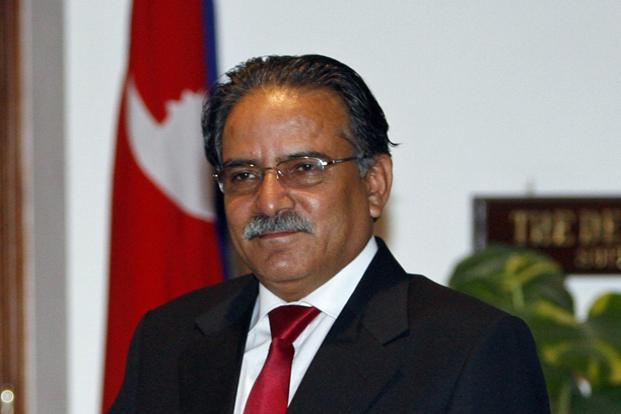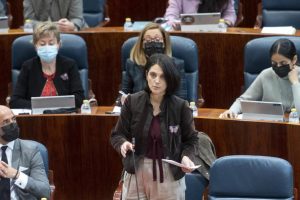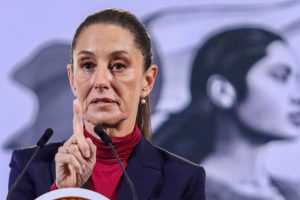CPN Maoist Center Chairman Pushpa Kamal Dahal “Prachanda” was appointed Nepal’s new prime minister on Sunday.
This comes after the former guerrilla leader made a sharp break with the five-party ruling alliance led by the Nepali Congress, ending political uncertainty in the Himalayan republic after general elections last month failed to yield a clear victor.
No party of the 275 members of the House of Representatives has the 138 seats needed to form a government. The Nepali Congress is the largest party with 89 seats in the House of Representatives, while CPN-UML and CPN-MC have 78 and 32 seats, respectively.
The surprising news may not bode well for India-Nepal ties, as Prachanda and his main supporter, KP Sharma Oli, have had some run-ins with New Delhi over territorial issues.
Prachanda, the 68-year-old leader of the former communist rebels, has been appointed Nepal’s prime minister, according to a statement issued by the president’s office here.
The president had summoned any member of the House of Representatives who could muster a majority with the support of two or more parties, as stipulated in article 76, clause 2, of the Constitution, to present his candidacy for the position of first minister before 5:00 p.m. on Sunday.
Prachanda submitted his candidacy before the expiration of the term given by the President.
The inauguration ceremony for the newly appointed prime minister will take place on Monday at 4:00 p.m., according to the president’s office.
Prachanda, along with his rival turned ally Oli, CPN-UML Chairman, Ravi Lamichhane, Chairman of the Rastriya Swatantra Party (RSP), Rajendra Lingden, head of the “pro-Hindu” Rastriya Prajatantra Party, among other senior leaders, addressed previously to the president’s office with a proposal to name him the new prime minister, according to the sources.
It has the support of 168 legislators out of the 275 members of the House of Representatives, including the CPN-UML with 78, the CPN-MC with 32, the RSP with 20, the RPP with 14, the JSP with 12 , the Janamat with 6, the Nagarik Unmukti Party with 3 and three independent legislators.
Prachanda, appointed Nepal’s prime minister for the third time, is considered pro-Chinese. In the past, he has stated that a new understanding with India needed to be reached on the basis of a “new scenario” in Nepal and after addressing all outstanding issues, such as the revision of the 1950 Treaty of Amity and the resolution of border disputes. of Kalapani and Susta.
The India-Nepal Peace and Friendship Treaty of 1950 forms the basis of the special relations between the two countries.
However, in recent years, Prachanda has asserted that India and Nepal need to diplomatically address some of the issues “left by history” to realize the full potential of bilateral cooperation.
His main supporter, Oli, is also known for his “pro-Chinese” stance. As prime minister, Oli claimed last year that he was trying to oust him after his government redrew Nepal’s political map by incorporating three strategically key Indian territories, a move that strained ties between the two countries.
India had called Nepal’s “artificial expansion” of land claims “untenable” after its Parliament unanimously approved in 2020 the country’s new political map, which included the areas of Lipulekh, Kalapani and Limpiyadhura, which India claims they belong to you.
No party of the 275 members of the House of Representatives has the 138 seats needed to form a government
The country shares a border of more than 1,850 km with five Indian states: Sikkim, West Bengal, Bihar, Uttar Pradesh and Uttarakhand.
Landlocked Nepal is heavily dependent on India for the transportation of goods and services. Nepal has access to the sea through India, and imports a predominant proportion of its needs from and through this country.
Born in Dhikurpokhari, in the Kaski district near Pokhara, on December 11, 1954, Prachanda remained in hiding for almost 13 years. He entered mainstream politics when the CPN-Maoist went peaceful, ending a decade of armed insurgency.
He led the armed struggle from 1996 to 2006, which ended with the signing of the General Peace Agreement in November 2006.
China’s overwhelmed healthcare system braces for a spike in COVID infections
Earlier, a crucial meeting was held at the residence of former Prime Minister Oli, where the CPN Maoist Center and other smaller parties agreed to form a government under Prachanda’s leadership.
There has been an understanding between Prachanda and Oli to run the government in turns and Oli agreed to appoint Prachanda Prime Minister at the earliest opportunity as per his demand.
“As the majority party, the Nepali Congress failed to form a government under its leadership, as per Article 76.2 of the Constitution, within the time frame set by the President. Now the CPN-UML has taken the initiative to form a new government under the leadership of Prachanda with the support of 165 legislators,” Shankar Pokharel, CPN-UML Secretary General, told reporters after the meeting.
On the same day, Prachanda left the five-party alliance led by the Nepali Congress after the Prime Minister and Chairman of the Nepali Congress, Sher Bahadur Deuba, rejected his prime ministerial bid in the first round.
Deuba and Prachanda had earlier reached a tacit agreement to lead the new government in turns.
During talks with Prachanda on Sunday morning at the Prime Minister’s House, the Nepali Congress had claimed the two key posts of president and prime minister, which Prachanda refused, so the talks failed, according to Maoist sources.
The NC offered the position of spokesperson to the Maoist party, which was rejected by Prachanda.
“The alliance has been broken because last minute talks between Deuba and Prachanda failed to reach an agreement,” Shah told PTI earlier in the day.
There has been an understanding between Prachanda and Oli to run the government by turns and Oli agreed to appoint Prachanda as Prime Minister at the earliest opportunity as per his demand.
After talks with Prime Minister Deuba failed, Prachanda came to the private residence of CPN-UML President Oli to seek his support to become Prime Minister. He was joined by leaders of other smaller parties.
In the House, the CPN (United Socialist) has 10 seats, the Loktantrik Samajwadi Party (LSP) has four, and the Rastriya Janamorcha and the Nepal Workers and Peasants Party each have one seat.
There are five independent members in the Lower House.
Article republished from The Wire as part of an agreement between both parties to share content. Link to the original article:https://thewire.in/south-asia/prachanda-returns-as-nepal-pm-for-third-time-with-kp-sharma-olis-backing












